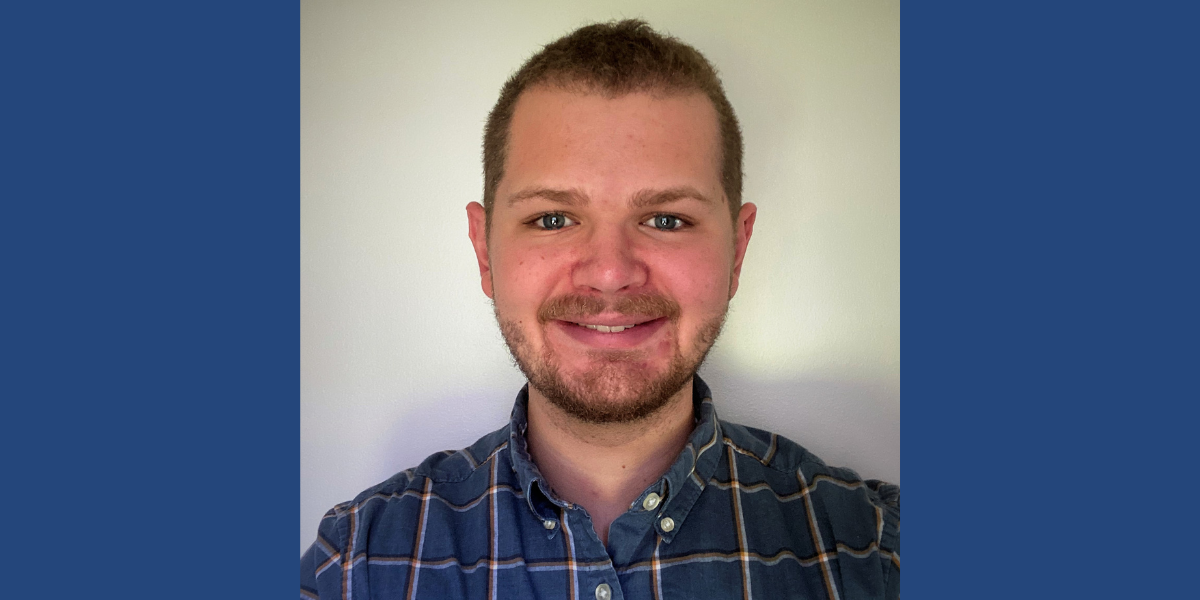Diving into data
CVM graduate student Jared Young will use an upcoming fellowship to unravel clues that could combat respiratory illness

CVM graduate student Jared Young will use an upcoming fellowship to unravel clues that could combat respiratory illness
Jared Young was sitting in an undergraduate microbiology class at West Texas A&M University when everything clicked.
Young, then an animal science major, was listening to a lecture on antimicrobial resistance (AMR), one of the biggest emerging threats to both human and animal health. There were several big questions that were still mostly unanswered: Do AMR genes cause resistance simply by being present in a microbiome? How often do they move around between organisms in a microbiome? Do these genes occur randomly or is there something strategic about their presence?
“The answer to all of these is maybe, yes, and we don’t know,” Young says.
What started as an itch to learn more turned into the driving force behind Young’s research, which he pursues as a student in the University of Minnesota (UMN) College of Veterinary Medicine’s (CVM) dual DVM and PhD program.
Today, his research uses computational biology––a field that analyzes data to make theoretical models and simulations––to untangle troves of data that can more concretely answer questions about how microbiomes impact animal health and how AMR fits into the picture.
“When I started, I was an animal science major and knew nothing about computers. I never expected to fall in love with the computational aspect of it, but that’s now driving my research, Young says.
The importance of his research is gaining recognition.
Young received the highly competitive FFAR Vet Fellowship, an initiative of the Foundation for Food and Agriculture Research (FFAR) and the American Association of Veterinary Medical Colleges (AAVMC) that funds promising research that works to address significant challenges related to food and nutritional security, environmental sustainability and emerging pathogens, and moves forward the development of new technologies and on-farm practices.
“A great benefit of this fellowship is that it allows Jared to combine his passion for livestock production with his passion for computational biology,” says Dr. Noelle Noyes, Young’s advisor at CVM.
Young developed his research proposal with Noyes. He plans to mine existing data taken from swine and cattle to determine the bacterial makeup of their respiratory systems and compare that to their health at the time the sample was taken.
“Many of the diseases we see in swine and cattle that really impact the industry are respiratory diseases,” he says.
While genome research has gotten a lot of attention in the past decade, it leaves out important information. For this reason, Young is unraveling the metagenome, which includes all of the bacteria, fungi, and viruses that work together in an entire microbiome. Rather than starting with a single bacterium, Young will reverse engineer the metagenome to determine which specific microscopic life make up the community.
“Shotgun metagenomic sequencing takes all of the genetic material in a microbial community and breaks it down into short reads. Then you take the short reads and attempt to reassemble them, almost like a LEGO set, to create partial to complete draft microbial genomes. In theory, it allows us to identify more specifically what bacteria are present down to the species and strain level,” Young says.
The practice gives scientists more information about the bacteria that are present and how they might function as part of the whole. It also allows experts such as Young to identify bacteria, fungi, and viruses that are difficult to culture or take too much time to grow to a state that’s able to be studied.
“With the respiratory samples, I want to identify bacteria that maybe we might not expect and get a more complete picture of what bacteria could compose different parts of the respiratory microbiome,” Young says.
Eventually, the information will provide important context about how age, important points of life such as weaning or vaccination, where an animal lives, and whether or not they had a disease all influence––or are influenced by––its microbiome. Then Young will make the data easily available for educational tools for producers and veterinarians that don’t specialize in computer science.
“Every area of microbial ecology needs more work, but respiratory samples are a lot harder to collect than things like the fecal microbiome. This is an opportunity to fill the gap in data,” he says.
It will also push forward a solution to one of the many challenges facing the global food system today, Noyes says.
“We need more people like Jared who want to use computational approaches to leverage microbial communities to improve livestock health and sustainability, food safety and security.,” she says. “FFAR recognized this need.”